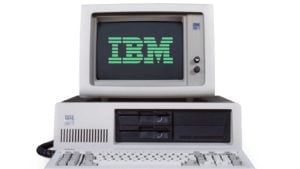Investors tend to gravitate to dividend stocks, particularly when those equities increase their payout on an annual basis. When these types of stocks achieve 25 consecutive years of payout hikes, analysts refer to them as “dividend aristocrats.”
As many of the top tech stocks matured, they embraced the practice of annual dividend increases. Now, dividend stocks such as Microsoft (NASDAQ:MSFT) and Apple (NASDAQ:AAPL) could someday achieve that status.
However, other dividend stocks with a history of annual dividend hikes now find themselves struggling. For these equities, profit growth has become challenging. Moreover, they have high dividend payout ratios — the percentage of profit a company pays out in dividends. This increases the odds of a dividend cut, and firms that cut dividends after years or decades of annual payout hikes tend to suffer for an extended period.
Consequently, investors looking for income vehicles should proceed with caution in the following income stocks:
Dividend Stocks That Could Struggle: 3M (MMM)

3M (NYSE:MMM) is one of the most respected dividend stocks in existence today. With innovative products that have remained popular for decades, the company has funded 60 straight years of payout hikes. However, its China exposure could threaten the dominance … and perhaps the dividend that bolstered its reputation in the preceding decades.
The former Minnesota Mining and Manufacturing Company has seen its stock struggle over the last two years. The company has become dependent on China over time. Hence, the ongoing trade war has hammered MMM stock. It has lost close to 40% of its value since peaking in January 2018.
Part of the decline came after an earnings miss sent the stock plummeting. It faced further pain as Stephen Tusa of JP Morgan rated it an underweight and warned of a possible dividend cut.
Despite the longevity of the payout, it now consumes about 67.5% of company profits. This is due in part to the trade war that cut earnings by 11.3% this year. For now, analysts forecast an earnings increase next year. However, if the trade war lingers, this could place further pressure on the dividend, and by extension, MMM stock.
If the payout sees a cut, expect the bear market in 3M stock to become a depression.
Coca-Cola Co (KO)

Coca-Cola (NYSE:KO) should serve as a lesson that some dividend stocks can become victims of their own success. So famous is its flagship brand that people can find Coca-Cola virtually anywhere in the world. However, this leaves little room for its flagship beverage to grow. As a result, the company has had to bolster earnings using other beverages.
However, health-conscious consumers often avoid soda drinks. The company wisely mitigated this by introducing smaller cans. It has also focused on sparkling water beverages as of late. However, due to its struggles, the dividend now consumes almost 85% of company profits. Also, because it is a dividend aristocrat with 56 straight years of payout hikes, any cut to the dividend would devastate KO stock.
For now, the company may gain some breathing room. Recent moves look set to take profit growth from 1% this year to 7.6% in 2020.
However, this kind of profit growth likely does not justify a forward price-to-earnings ratio of about 23.7. Moreover, if its current strategy fails to increase profit, the company may have to end its long streak of payout hikes, which would probably leave KO stock struggling for years. Hence, what looks like a safe equity backed up by an iconic product may have become more speculative than it appears.
General Mills (GIS)

General Mills (NYSE:GIS) prospered for decades by producing necessary, recession-proof products. GIS stock and some of its peers became successful dividend stocks on such a strategy. Consequently, investors took for granted that while boring, GIS’s growth would remain stable because people always need to eat.
While people do always need food, the company found out that people do not need to eat the type of packaged foods for which consumers know General Mills best. Although the company has made efforts to produce some fresher foods, this has not led to a turnaround in GIS stock.
Since peaking near the $72 per share mark in 2016, General Mills has fallen by around 30%. The forward P/E ratio is now about 14.8. While not high, investors may not see GIS stock as a bargain with earnings growth projected at 2.1% for the year.
The dividend presents other concerns. On the surface, the $1.96 per share dividend, which yields almost 3.9%, looks appealing at first glance. It also helps that the company has hiked the payout for 15 consecutive years.
However, this is long enough that increases become an expectation instead of a benefit. Hence, a cut or even a pause in increases could bring a mass stock selloff. Moreover, with a payout ratio north of 60%, this leaves little profit to pursue products that may sell better in the current environment.
Given these headwinds, pursuing GIS stock for the high dividend appears too risky at these levels.
International Business Machines (IBM)

IBM (NYSE:IBM) has become one of the dividend stocks in transition. With legacy businesses in decline, it has turned to the cloud in hopes of turning itself around. To expand its cloud offerings, IBM spent $34 billion to acquire Red Hat.
While this segment has shown growth, existing legacy businesses have kept the company in an overall decline. Profits will likely fall this year, and analysts expect average annual earnings growth of only 1.39% over the next five years. Moreover, this move has left the company heavily indebted, leaving limited room financially.
That financial room faces more limits with the cost of the dividend. The payout now claims more than 70% of profits, according to Yahoo. The company is also approaching dividend aristocrat status. Unfortunately, this also leads investors into assuming they will get the annual payout hike. Unless they have to cut the dividend to save the company, not raising the dividend could hurt them more than simply passing another increase.
The 4.8% yield on the payout and the forward P/E of 10.1 may motivate some to buy. However, the stock remains in a downtrend. Until success in the cloud can outweigh falling revenue and profits in their legacy businesses, conditions for IBM stock will probably get worse before they improve.
Johnson & Johnson (JNJ)
This time last year, ask the average American about Johnson & Johnson (NYSE:JNJ), and they would have described it as the respected company that has provided generations of Americans with high-quality personal health products. However, now, many look at them as a corporation that helped propel the opioid crisis.
From a financial standpoint, J&J looks like one of the most dependable companies and dividend stocks in existence. For now, it holds a AAA credit rating, something only JNJ and Microsoft can claim. Moreover, it has increased its dividend for 56 straight years.
Unfortunately for holders of JNJ stock, the fallout from the opioid crisis places both claims in danger. Between 1999 and 2017, the U.S. Centers for Disease Control and Prevention linked 399,230 deaths to prescription opioids. In August, a court ordered the company to pay $572 million in damages caused within the state of Oklahoma.
However, that covers only one relatively small state and court cases in other states are pending. Moody’s has announced that the costs may resort in the downgrade of the AAA credit rating. Also, investors have to ask if the cost of settlements will allow for dividend increases or even the dividend itself to continue?
I am not yet ready to call for the demise of Johnson & Johnson. As Tom Taulli states, JNJ stock remains a financial powerhouse with a strong drug pipeline. However, the company’s role in the opioid crisis will cost the company heavily. Until we can better understand the costs, I see JNJ as an equity to avoid.
McDonald’s (MCD)

The problems for McDonald’s (NYSE:MCD) mirror those of dividend stocks such as Coca-Cola in many respects. Both have expanded across the world but have struggled in recent years amid health concerns over their products.
McDonald’s has long tried to address this by offering healthier food. It has also remodeled its restaurants. As a result, profit growth reached the double-digits for a time. This also increased the safety of its dividend, which has now risen for 42 consecutive years.
However, most analysts expect these earnings increases to slow into the low-to-mid single digits. While that leaves the company in a stable condition for now, investors should realize that the payout ratio currently stands at 59%. This dramatically lowers its margin for error. If profit levels start to decline again, MCD stock will face the threat of a dividend cut.
Moreover, an earnings miss in the last report sent the equity falling. However, even after the drop, it still trades at a forward P/E of about 22.8. This takes it to historical highs, indicating the MCD may not have finished correcting despite a 13% drop.
For now, McDonald’s stock faces troubles only with a high valuation. However, should profit growth turn negative, MCD, and possibly its dividend, could face years of suffering.
Procter & Gamble (PG)

Procter & Gamble (NYSE:PG) has prospered over the decades by providing products as a leader in mundane but necessary products. Admittedly, no matter how the economy performs, consumers need things like toilet paper, laundry detergent, and paper towels for everyday use.
However, the problem for PG stock is that consumers do not have to buy these products from Procter & Gamble. Their offerings are neither particularly innovative nor difficult to copy. The company mitigated this issue for decades with name recognition and shelf space. However, the rise of e-commerce has negated much of the shelf-space advantage.
Moreover, the stock has risen by about 35% this year as profits have grown faster than anticipated. However, this has taken the forward P/E ratio to around 23.8. This seems high for a company that will increase earnings by only 8.8% this year and 6.3% next year. Given this multiple, I think PG stock will soon face stagnation or possibly, a decline.
Furthermore, the dividend payout ratio has risen to 186%. I see this and changing market conditions as a problem for a payout that has increased for 62 straight years. If consumers turn on PG products, cutting or even not hiking the payout could devastate this stock. While I do not think Procter & Gamble will go away, I would consider cleaning PG stock out of one’s portfolio.
As of this writing, Will Healy did not hold a position in any of the aforementioned stocks. You can follow Will on Twitter at @HealyWriting.

